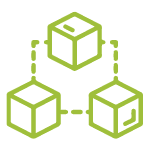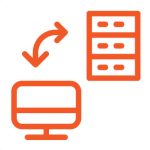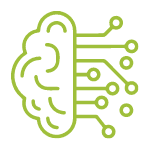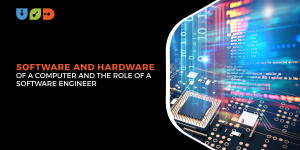Software engineering is a dynamic and evolving field that requires constant adaptation and learning. As software engineers, it’s crucial to stay updated with the latest software engineering best practices and techniques to excel in your craft. In this comprehensive guide, we’ll delve into 21 essential practices that can significantly enhance your software engineering skills and contribute to your success in the realm of software development.
What is Software Engineering?
Software engineering is more than just writing code—it’s a holistic approach to creating robust and efficient software systems. It involves understanding user needs, designing elegant solutions, coding with precision, testing for reliability, and maintaining the software’s health over time. A skilled software engineer is not only a proficient coder but also a problem solver who can navigate complex challenges and deliver solutions that stand the test of time.
The software development process is a journey that involves careful planning, analysis, design, implementation, testing, and deployment. Software developers need to collaborate with stakeholders, gather requirements, design user interfaces, and ensure the final product aligns with the desired goals. This multifaceted approach distinguishes software engineering from mere coding and underscores the importance of adopting best practices. Software development encompasses not only the technical aspects of creating software but also the management and organizational processes that ensure the successful completion of software development projects.

Importance of Software Engineering
In today’s rapidly advancing technological landscape, software engineering plays a pivotal role in shaping our digital world. Here’s why it’s of paramount importance:
- Efficiency and Productivity: Following sound software engineering best practices results in well-structured code, streamlined processes, and efficient collaboration among team members.
- Quality Assurance: Properly engineered software goes through rigorous testing, leading to higher quality and fewer defects.
- Scalability: A solid foundation in software engineering ensures that apps can scale seamlessly as user demands increase.
- Risk Management: By adhering to software engineering best practices, software engineers mitigate risks associated with security breaches, system failures, and data leaks.
- Innovation: Software engineering best practices foster innovation by providing a structured framework for creativity and problem-solving.
Essential Software Engineering Skills Required for Software Development

1. Coding Practices: Code Readability & Clean Code
Writing clean and readable code is a cornerstone of software development. Clear, well-organized code enhances collaboration, debugging, and maintenance. Adopting meaningful variable names, consistent formatting, and commenting practices are essential for producing code that is easy to understand and work with.
2. Reduce Your Technical Debt
Technical debt refers to the cumulative consequences of choosing quick and expedient solutions over more robust ones. Consistently addressing technical debt by refactoring and optimizing code helps in maintaining a healthy codebase and prevents future complications.
3. Coding Practices: KISS, YAGNI, DRY, and SOLID
These principles (Keep It Simple, Stupid; You Ain’t Gonna Need It; Don’t Repeat Yourself; Single Responsibility, Open-Closed, Liskov Substitution, Interface Segregation, Dependency Inversion) guide software engineers in making design and coding decisions that promote simplicity, modularity, and maintainability.
- Keep It Simple, Stupid (KISS): KISS principle advocates simplicity in design and development. By keeping solutions simple and avoiding unnecessary complexities, software developers create systems that are easier to understand and maintain.
- You Ain’t Gonna Need It (YAGNI): YAGNI advises against implementing features or functionality that are not currently required. This prevents over-engineering and focuses development efforts on delivering essential value.
- Don’t Repeat Yourself (DRY): DRY principle promotes code reusability by avoiding duplication. Writing code once and using it across the application reduces maintenance efforts and the likelihood of bugs.
- SOLID Principles: SOLID is an acronym representing five design principles—Single Responsibility, Open-Closed, Liskov Substitution, Interface Segregation, and Dependency Inversion. These principles guide software developers in creating flexible, maintainable, and scalable software architectures.
4. Unit Test Your Code
Software developers often find themselves navigating a complex maze of code, where a small change in one area can inadvertently affect another. Unit testing serves as your trusty map in this maze. By writing unit tests, you create a safety net that catches bugs and errors before they spiral into larger issues.
Unit tests focus on individual units or components of your software, evaluating their behavior in isolation. This approach offers several benefits. First, it encourages modular design, as you need to isolate components for testing. Second, it provides immediate feedback, allowing you to identify and fix issues as you go. Finally, it fosters confidence in your code, knowing that it has been rigorously tested and validated.
5. Behavior Driven Development
Behavior Driven Development (BDD) emphasizes collaboration among developers, testers, and domain experts to create a shared understanding of desired behaviors. BDD scenarios serve as executable documentation and drive the development process.
6. Automated Acceptance Testing and Software Reliability
Automated acceptance tests validate that software meets the specified requirements and functions as expected. These tests are automated and run through various scenarios, reducing the likelihood of human errors in testing.
Ensuring the reliability of software is paramount. Imagine building a bridge without testing its weight-bearing capacity—it’s a disaster waiting to happen. Most engineers rely on a robust testing strategy to identify and rectify bugs, vulnerabilities, and performance bottlenecks.
Software testing is a critical component of the software development lifecycle. It involves systematically subjecting the software to various scenarios, input data, and conditions to ensure it functions as intended. Rigorous testing minimizes the risk of unexpected failures in production and enhances user satisfaction. Through unit tests, integration tests, and end-to-end tests, developers validate the integrity of their code and provide a dependable experience to users.
7. Performance Testing
Imagine a website that works perfectly when accessed by a single user but grinds to a halt under heavy traffic. This scenario highlights the importance of performance testing. Just as a car undergoes stress tests before hitting the road, software needs to endure performance tests before being released into the wild digital world.
Performance testing involves subjecting your software to various loads and scenarios to assess its responsiveness, stability, and scalability. By identifying performance bottlenecks and addressing them proactively, software developers ensure that their creations can handle the demands of real-world usage.

8. Software Development Methodologies to Consider
Different development methodologies, such as Agile, Scrum, and Waterfall, offer distinct approaches to project management and software development. The selection of the appropriate methodology hinges on the project’s needs and the dynamics of the development team.
- Agile: Agile methodologies emphasize iterative development, collaboration, and rapid feedback. Scrum and Kanban stand out as well-liked frameworks under the Agile methodology.
- Scrum: Scrum divides work into time-bound iterations called sprints, promoting regular updates, adaptability, and continuous improvement.
- Waterfall: The Waterfall model follows a linear approach, with distinct phases like requirements, design, implementation, testing, and deployment.
9. Test-Driven Development
Test-Driven Development (TDD) entails writing tests before writing code. This approach promotes writing code that fulfills specific requirements, leading to more robust and well-tested software.
10. Apply Refactoring Frequently
Refactoring entails rearranging current code without altering its outward functionality. Regularly refactoring improves code maintainability and adaptability.
11. Continuous Integration / Continuous Deployment
In the fast-paced world of software development, the ability to deliver features quickly and reliably is paramount. This is where Continuous Integration (CI) and Continuous Deployment (CD) come into the picture. CI involves frequently integrating code changes into a shared repository, where automated tests are run to catch issues early.
CD takes this a step further by automatically deploying the tested code changes to production environments. This approach reduces the risk of bugs and streamlines the entire development process, from write code to delivering value to users.
12. Software Architecture – Monoliths
The choice between monolithic and microservices architecture has a significant impact on the structure of your software project. Monolithic architecture involves building a single, unified application with all components tightly coupled. While it can simplify development initially, it can become challenging to maintain and scale as the project grows.
13. Software Architecture – Microservices
Microservices architecture breaks down the application into smaller, loosely coupled services that communicate with each other. Each service has its own distinct function and can be developed, deployed, and scaled independently. This architecture is well-suited for complex projects with evolving requirements.
14. DevOps
DevOps is a cultural and technical shift that underscores the importance of collaboration between development and operations groups. It aims to automate and streamline the software development and deployment lifecycle.

15. Monitoring and Logging
Monitoring and logging are crucial for identifying and diagnosing issues in a software application. Implementing effective monitoring practices ensures the smooth functioning of applications in production environments.
16. Version Control and Collaboration
Version control systems like Git enable software developers to track changes, collaborate seamlessly, and revert to previous versions if needed. These systems are essential for managing codebase evolution.
Imagine multiple software engineers working on different aspects of a project simultaneously. Without version control, chaos could ensue. Version control systems like Git enable collaborative development by tracking changes, allowing multiple contributors to work on the same project without conflicts. This fosters a collaborative and organized approach to software development.
17. Configuration Management
As your software project evolves, managing its configuration becomes increasingly important. Configuration management involves maintaining consistency across development, testing, and production environments. This ensures that the software behaves predictably and reliably regardless of the environment it’s deployed in.
18. Cloud Computing
Cloud computing provides numerous benefits that can significantly enhance the development and deployment of software applications. Familiarity with cloud platforms and services is increasingly important for modern software engineers. Here’s a comprehensive discussion of how cloud computing aligns with software engineering best practices:
Scalability and Elasticity: Cloud computing enables engineers to design applications that can dynamically scale up or down based on demand. This scalability and elasticity are crucial for handling varying workloads without the need to overprovision resources. Engineers can optimize costs and ensure optimal performance by automatically adjusting resources as needed.
Agility and Flexibility: Cloud services facilitate rapid development and deployment through services like Platform as a Service (PaaS) and Function as a Service (FaaS). Engineers can focus on coding rather than infrastructure setup, allowing for quicker iteration and feature deployment.
Cost Efficiency: Cloud platforms offer pay-as-you-go pricing models, reducing upfront infrastructure costs. Engineers can avoid the expense of maintaining and managing physical hardware while optimizing resource utilization to control expenses.
Global Reach: Cloud services provide data centers across the world, enabling developers to deploy applications closer to their target audience. This reduces latency and improves user experience for a global user base.
Data Management: Cloud services provide scalable and managed data storage solutions, simplifying data management for developers. They can focus on data modeling, querying, and analysis without concerns about infrastructure scalability.
Security and Compliance: Leading cloud providers offer robust security features, including encryption, identity and access management, and compliance certifications. Developers or engineers can leverage these features to build more secure applications and comply with industry regulations.
High Availability and Fault Tolerance: Cloud platforms offer built-in redundancy and failover mechanisms, enhancing application availability and minimizing downtime. Engineers can design for fault tolerance without the complexities of setting up and managing these mechanisms themselves.
19. DevSecOps
The integration of security into the DevOps approach gives rise to DevSecOps. In a world where security breaches are a constant threat, DevSecOps ensures that security measures are woven into every stage of the software development life cycle. This proactive approach reduces vulnerabilities and enhances the security posture of your software.
20. Pen-Testing
Penetration testing, or pen-testing, involves simulating cyberattacks to identify vulnerabilities in your software project. By mimicking real-world threats, pen-testing uncovers potential weaknesses that malicious actors could exploit. This practice helps you bolster the security of your software by addressing vulnerabilities before they are exploited.
21. Communication and Collaboration
Software development is rarely a solitary endeavor. Achieving successful project results necessitates efficient teamwork and clear communication. Software engineers interact with designers, product managers, testers, and stakeholders to align efforts and ensure the software meets user needs.
Clear communication ensures that requirements are understood, potential issues are addressed, and progress is tracked. Collaboration fosters synergy, allowing teams to pool their diverse skills and perspectives to create software that exceeds expectations.
Conclusion
Enhancing your software engineering skills is a continuous journey that involves adopting best software development practices, staying updated with industry trends, and embracing new technologies. By following these 21 essential software engineering best practices, you’ll be well-equipped to tackle the common challenges related to software development with confidence and finesse.
FAQs
Q: How can I improve my coding practices for better readability?
A: Focus on using meaningful variable names, consistent indentation, and appropriate comments. Break down complex tasks into smaller functions with clear responsibilities.
Q: Why is automated testing important in software development?
A: Automated testing ensures that code changes do not introduce new bugs and that existing functionality remains intact. It also facilitates quick feedback during the development process.
Q: What’s the significance of microservices architecture?
A: Microservices architecture promotes modularity and scalability by breaking down applications into smaller, independent services. This makes it easier to develop, deploy, and maintain complex systems.
Q: How does DevOps contribute to software development?
A: DevOps streamlines collaboration between development and operations teams, leading to faster development cycles, quicker deployment, and improved overall software quality.
Q: Why is communication crucial for software engineers?
A: Effective communication ensures that requirements are understood, potential issues are addressed, and stakeholders are kept informed throughout the development lifecycle.
Q: What are the key stages of the software development processes?
A: The software development processes typically involve requirements gathering, design, implementation, testing, deployment, and maintenance. Each stage plays a crucial role in delivering a successful software product.
Q: How do I handle changing requirements during development?
A: Embrace Agile methodologies that allow for flexibility and adaptation to changing requirements. Regularly engage with stakeholders to gather feedback and make necessary adjustments to the project.
Q: What role does documentation play in software development?
A: Documentation is essential for ensuring that the software is well-understood, maintainable, and scalable. It provides a reference for developers, testers, and future maintainers, helping them navigate the codebase.
Q: What strategies can I use to manage software development project timelines?
A: Adopt project management methodologies like Scrum or Kanban to organize tasks, set priorities, and track progress. Regularly review and adjust the project plan to ensure timely delivery.
Q: How can I keep up with emerging technologies in software development?
A: Stay engaged with online communities, attend conferences, read industry blogs, and participate in online courses. Continuous learning is key to staying updated in the rapidly evolving field of software development.




























